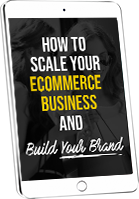Imagine a scenario where all you’re doing is running Facebook ads, let’s say a video ad in particular. And you’re not running much of any other media – no search, no affiliates, not up on Amazon. Whether you think you’re killing it or just can’t seem to crack the code, here’s something you need to know:
You may be giving up more than 50% of the sales you could (should) be generating.
Why? Because just like we experienced when I was overseeing TV media at Beachbody, there’s a spillover effect (sometimes massive) from platforms, especially ones using video, to, well, everywhere else. Consumers don’t all immediately purchase. Some go do research of their own on Google and Bing, others go looking for promo codes to see if they can find the best deal, and some just go to Amazon because they are loyalists.
Let me cut to the chase as simply and quickly as possible – if you’re running any sort of volume on Facebook (video or otherwise) or on YouTube or on TV, you have to, have to, have to run, at the very least, the following:
- Paid search ads on Google and Bing for your brand terms & trademark terms, including misspellings of both, as well as any buzz phrases or USP’s you include in the marketing (think, P90X’s “Get ripped in 90 days”)
Too many people underestimate Bing. Sure it’s much smaller than Google, but it’s still bigger than zero, takes very little to manage it, and usually has a very high ROI.
And if you don’t those revenues or margin, do you mind if I take them? Didn’t think so. All those little’s will add up. That’s how you win.
- Affiliate channels – whether you’re set up thru networks like Commission Junction, LinkShare or otherwise, get going with your affiliate program. Especially if you have a physical product, do as much as possible to get connected with the top affiliate networks – they’re the ones who can and do drive more than 70% of the traffic – Ebates, ShopAtHome, RetailMeNot, Offers.com, Savings.com, etc.
- Amazon – I’ll keep saying this until I’m blue in the face. if you have a physical product, you need to be up on Amazon. Assuming you want to make more money. Yes, absolutely, it’ll cannibalize some of your sales. But a very small percentage of them, so little relative to the incremental revenues you’ll get that you won’t stress about it. There are a ton of folks out there who are Amazon buyers only. And correct, you don’t own the customer. But would you rather have fewer sales or more sales?
To illustrate the ripple (sometimes called a “halo” effect, which frankly I can’t stand), let me show you some stats from a campaign I managed for a client.
We scaled from $100 a day to $12K per day in 2+ weeks on Facebook, drove 17 million video views, 30,000 shares, 10,000 comments and 125,000 total engagements. In 8 weeks, we generated over $500K of revenue on roughly $190K of media spend, which for this campaign was better than goal. The only reason we pushed like this was because we saw the ROI. (As you look at the chart below, the reason for the precipitous decline is that we ran out of inventory – yes, a major bummer. But we are finally back up and seeing similar performance numbers, after a huge break.)
Here’s what I think is particularly notable in this graph: at the peak, Facebook represented 80%+ of the media dollars spent for this product (the blue line), but less than 50% of the revenues generated from the campaign, when measuring last (or really even first) click attribution. The blue column is Facebook-attributed revenues vs. the organ column which are revenues attributed to another channel.
Put another way, we spent the vast majority of the media dollars on Facebook, but got the majority of the orders through non-Facebook channels. So had we not been on Google, Bing, and set up with affiliates, we would have given up more than half our revenues. In this case, we actually didn’t own the product on Amazon, and that represented another 20% of revenues.
I’m a big believer of appropriately attributing orders back to trackable media, but in this case, because we knew what the baseline was prior to the Facebook media blasting off, it was very clear that the lift in Google, Bing and affiliate traffic was the direct result of the Facebook media. Had we not looked holistically at all media and revenues sources, we would have also miscalculated the real value of that Facebook media.
Frankly, I’m amazed more people aren’t talking about this effect. I’ve mentioned this at a few events I’ve spoken at in the past couple months, and I’ve literally seen people leave the room afterwards to tell their traffic folks to make sure any gaps they had are plugged.
Whether you’ve dismissed or ignored these older channels, at the least, get the basics in places. (I’m not talking about long-tail non brand terms. I’m talking about keywords like your brand. Very targeted, highly qualified traffic.)
And like I said earlier, if you don’t want the margin dollars from Bing (or anywhere else for that matter), give me a ring. But something tells me you want to keep all of it. So make sure your campaigns are set up to do so.
If you have additional insights you’d like to share, I’d love to hear them below.





